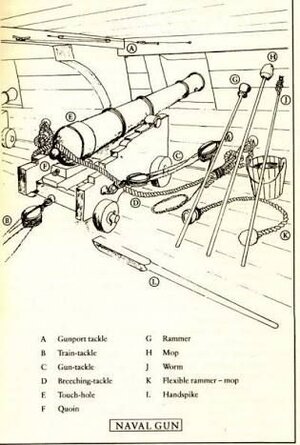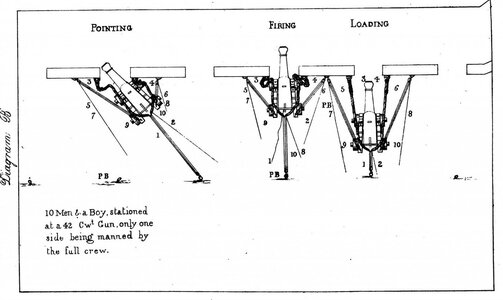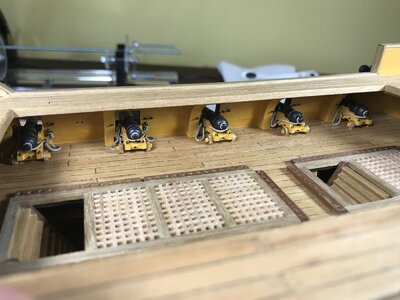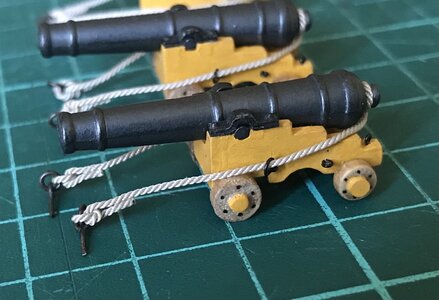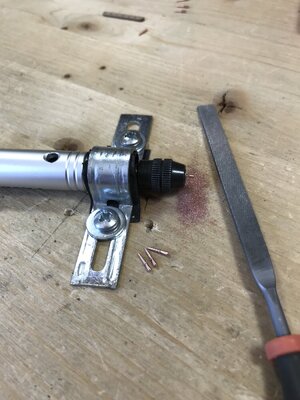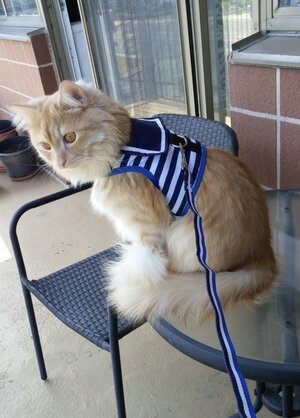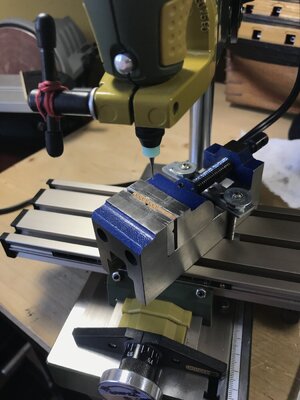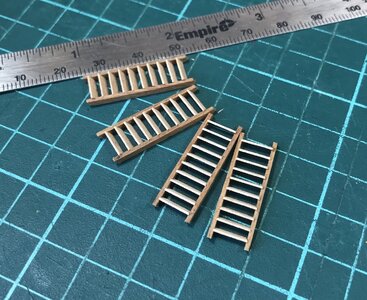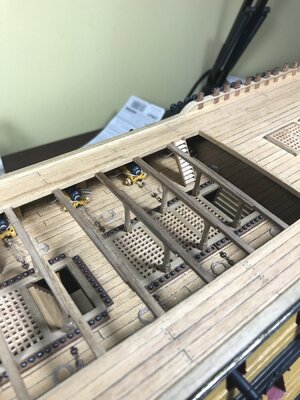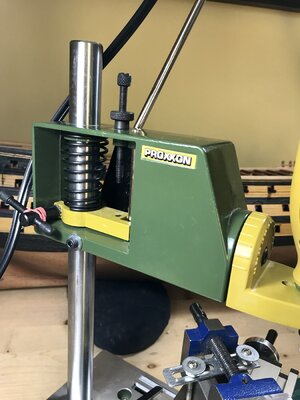Very nice rope production. I have a simple DIY hand cranked rope walk which produces some variations depending upon my turning consistency and the manner in which I guide the topper along setting the final lay. I have to pay attention to the direction of cranking to produce either cable or hawser laid lines.I use this rope walk. See picture.
View attachment 220873
The thread is this one. It’s very thin. I don’t know what its diameter is. It results into 0.2 mm diameter rope when worked from three threads.
View attachment 220874
Since then I decided I want a bit thicker rope for my cannon rigging. I made new rope of 0.27 mm diameter from 2 x 3 rope construction of same thread. See the difference.
View attachment 220875
Here is a posting that I did just after joining SoS showing my DIY rope walk down on Page 9 July 6, 2020
https://shipsofscale.com/sosforums/threads/posting-my-correct-navy-rate.5492/
with one of the very early demonstration uses before being able to walk much smaller lines than the large demonstration one in the photos.





